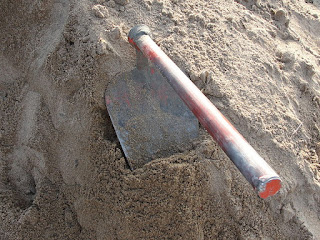Stealth aircraft is an aircraft that is designed to absorb and deflect radar uses stealth technology, making it more difficult to detect. Cactus is the name given to members of the flowering plant family Cactaceae. Hoe is a tool used in agriculture generally, but also used for other tasks. Who will win?
 |
| Stealth Aircraf |
Stealth aircraft has the ability to avoid detection, better detection of visual, audio, heat sensors, and radio waves (radar). Visually, the aircraft more difficult to be seen if have the same color as the background color (camouflage). In audio, of course, trying to make the plane more quiet. In heat sensors, air is usually detected from the heat arising from the body or from the surrounding air temperature.
The hottest part of the air is the air exhaust vents or exhaust engine and leading edge (the first part of the plane through the air). Heat from the exhaust can be reduced by mixing bursts of machine with cold air from the outside of the fuselage before the exhaled air and exhaust pipes extend. Part of this exhaust is usually pursued by anti-aircraft missile with an infrared sensor. However, modern heat-seeking missiles are now also have the ability to detect and pursue heat generated due to friction surface of the fuselage with the air.
Detection of radio waves is a way to prevent radio waves from the radar is not reflected from the fuselage and back to the radar. Radio waves can be absorbed if the airframe coated RAM (Radar Absorbent Material), is reflected in the other direction, or so that the waves become lost or mutually exclusive (it is the underlying form of stealth aircraft that have a shape other than an ordinary plane or a bit odd ).
 |
| Cactus |
The cactus can grow for a long time without water. Cactus commonly found in areas that are dry (desert). Plural word for cactus is kakti. Cactus has long roots in search of water and widen the absorption of water in the soil. Water is absorbed cactus stored in a room in the trunk. The cactus also has leaves that are transformed into thorns in order to reduce the evaporation of water through the leaves. {Therefore, cacti can grow on a long time without water.
The discovery of the cactus is believed to have started long before Europeans discovered the New World. However, a variety of information about the plants lost during the colonization by Spain. The first reference of the cactus discovered in the 16th century in chapter 16 of the book Historia General y Natural de las Indias (1535). The author of the book, Hernandez de Oviedo y Valdez describes as the cactus plants that have thorns distinctive and unique fruit. Most species of cactus native to North America, South, and Central America. Genus cactus first imported into Europe is melocactus. Botaniawan a Swede, Carl Linnaeus, giving the name cactus derived from the Greek Κακτος kaktos. In classical Greek, the word has meaning thorny weeds.
 |
| Hoe |
Some experts have proposed to hoe pulled by a rope with human traction as the source of the plow. The first plows appear in southern Mesopotamia towards 4500. C. and Egypt and India between 4000 and 3000. C. first carried by the man and then by animal traction. The first bars -part in contact with the earth to open and levantarla- were of the same piece of wood plow, then part other than treated wood and fire-hardened, to finally be metal, more durable and eficiente.
English Jethro Tull invented in the seventeenth century a hoe to dig pulled by a horse, being the best of the Garrett system, which can weed in one day, with the only use of a horse, four or five hectares of cereals, beets, etc.
